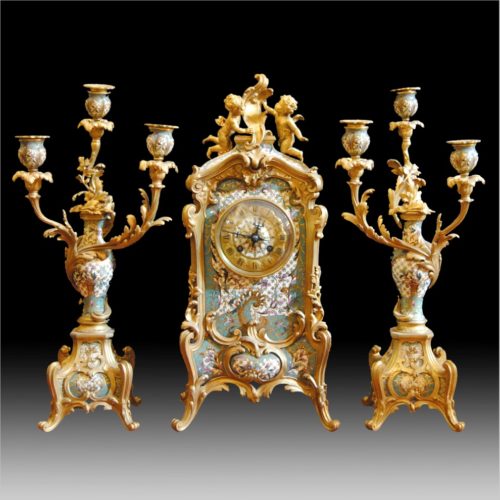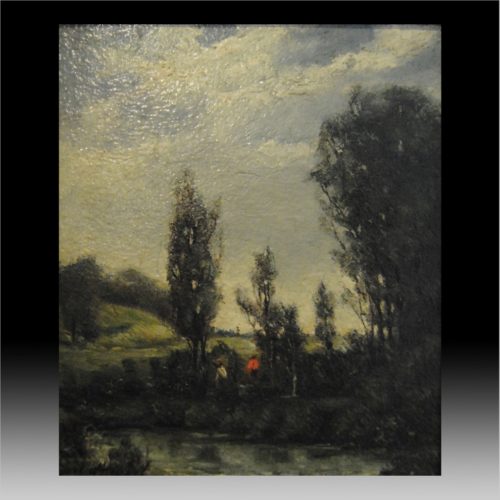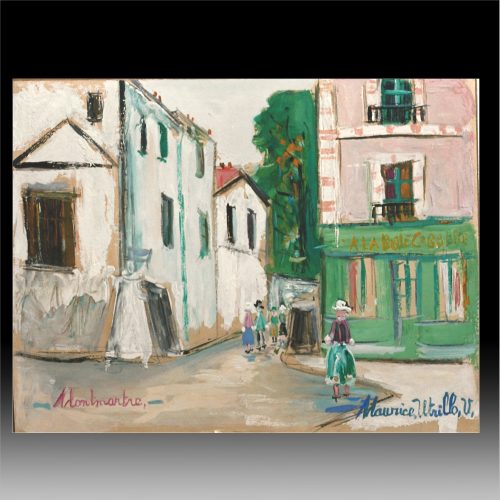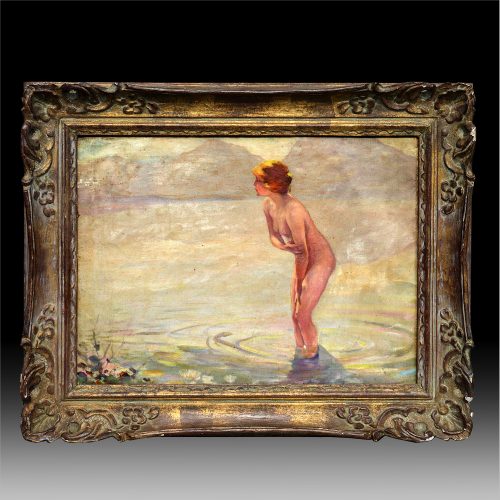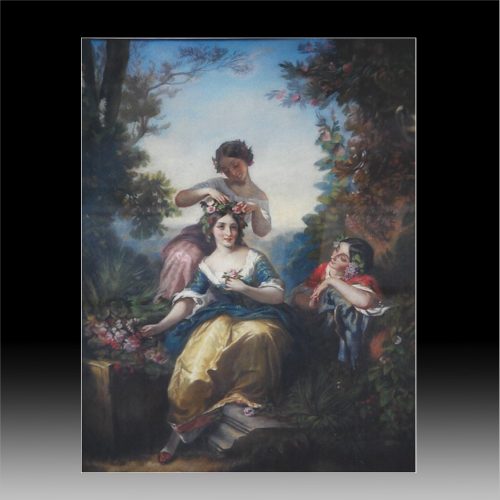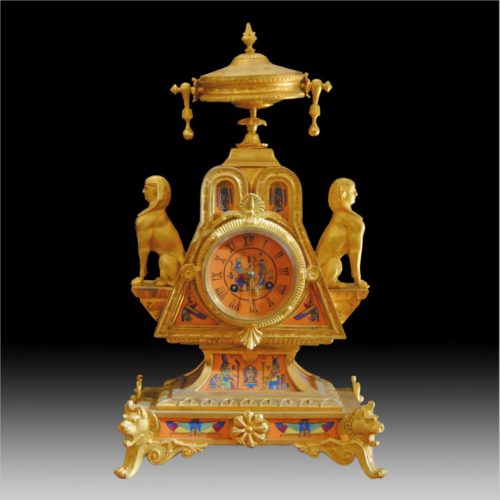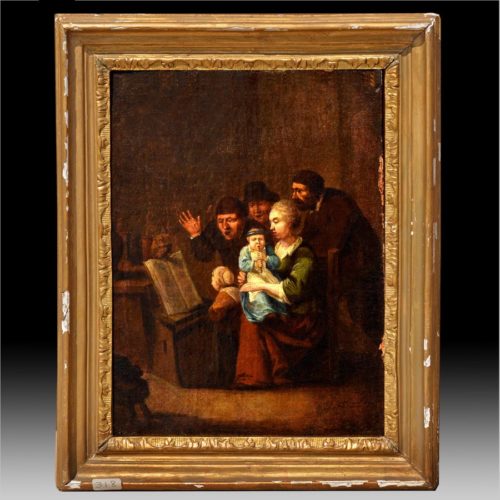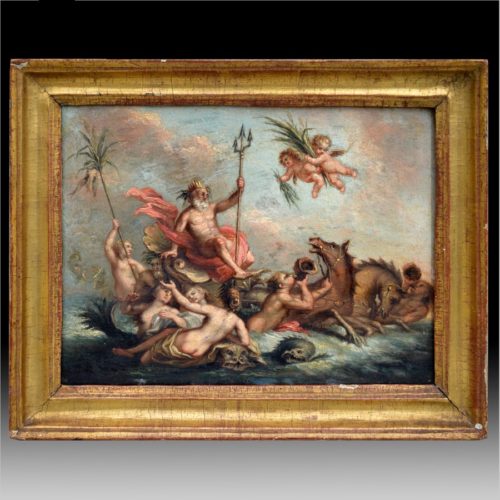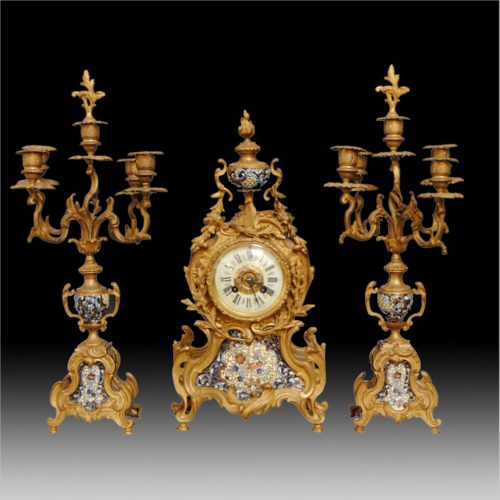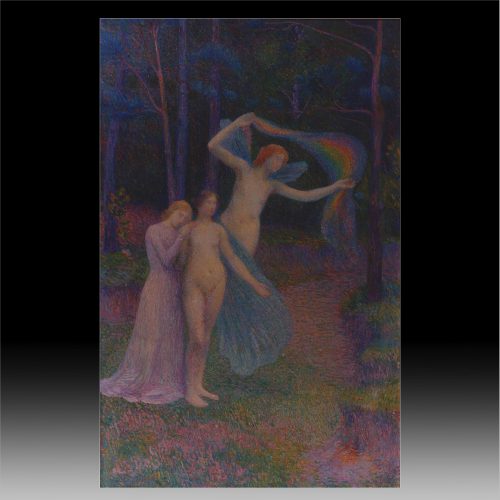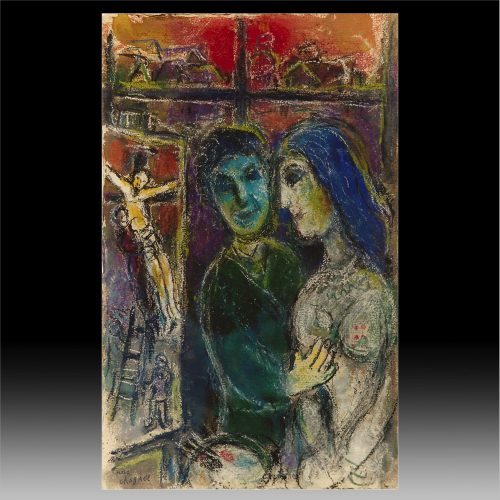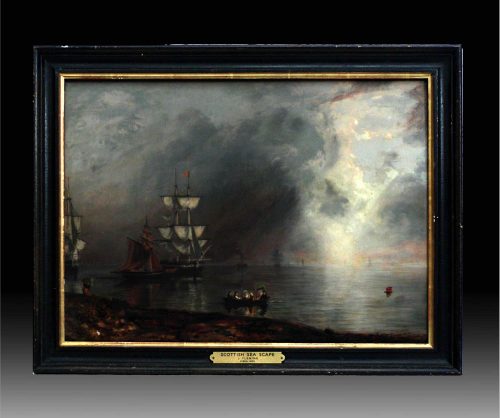-
A Clock Set with a Pair of Three-Light Candelabra. Height of Clock: 18 inches Height of Candelabra: 17 ¾ inches AC40000 F-1119
-
Carl D’Albert Landscape Oil on canvas 8 ¼” x 9 ¼” AC5200 @AC-NB
-
Maurice Utrillo (French, 1883-1995) “La belle Gabrielle Montmartre” Gouache on paper laid down on card 9” x 12 ¼” Signed and titled COA by P. Petrides Maurice Utrillo 1883-1955 French La belle Gabrielle Montmartre 9 3/8” x 12 3/8” (23.8 x 31.4cm) Paul Petrides kindly confirmed the authenticity of this
-
Attributed to Paul Chabas (French, 1869-1937) September Morning Oil on canvas 15 x 20 in. (38 x 51 cm)
-
Italian School Late 19th Century In the Garden Pastel on canvas 29” x 22” (73.6 x 55.9 cm)
-
An English Egyptian Revival Gilt-Bronze and Porcelain Clock Garniture, by Miller & Sons, London. Circa 1851. Comprising a clock and a pair of three-light candelabra; the clock surmounted by an urn, the triangular case centered to the front by a circular dial inscribed Miller & Sons London, flanked to each side by a seated lion, each with a pharaoh’s, on a rectangular base, on four scroll feet, each headed by a lion mask; the candelabra en suite. Height of Clock: 19 inches Height of Candelabra: 23 inches CL100102-376 AC40000 F-1168
-
Jan Josef Horemans ‘A Family singing in an Interior’ bears indistinct signature; oil on canvas 12 ½ x 9 ¼ in. 31.7 x 23.5 cm CL102794-225 327203-2 @AC-NB
-
François Boucher 1703-1770, French “The Triumph of Neptune” François Boucher (French; 29 September 1703 – 30 May 1770) was a French painter, draughtsman and etcher, who worked in the Rococo style. Boucher is known for his idyllic and voluptuous paintings on classical themes, decorative allegories, and pastoral scenes. He was perhaps the most celebrated painter and decorative artist of the 18th century. He also painted several portraits of his patroness, Madame de Pompadour. A native of Paris, Boucher was the son of a lesser known painter Nicolas Boucher, who gave him his first artistic training. At the age of seventeen, a painting by Boucher was admired by the painter François Lemoyne. Lemoyne later appointed Boucher as his apprentice, but after only three months, he went to work for the engraver Jean-François Cars. Boucher died on 30 May 1770 in his native Paris. His name, along with that of his patron Madame de Pompadour, had become synonymous with the French Rococo style, leading the Goncourt brothers to write: "Boucher is one of those men who represent the taste of a century, who express, personify and embody it." OM-300 CL102794-139640801-2
-
A French Ormolu and Champlevé Enamel Garniture with a pair of Four-Light Candelabra AC14000 F-32
-
Hippolyte Petitjean (French, 1854-1929) “Femmes dans le foret” Oil on canvas 39 ½” x 25 7/8” Signed and dated bottom left Painted in 1897 PROVENANCE: Estate of D. Gensburg, LA
-
Marc Chagall (French, 1887-1985) “Le peintre et la crucifixion” pastel and gouache on paper 20”x 12.5” Executed in 1968 Signed lower left COA by Comite Chagall
-
J. Fleming, circa 18 ‘Scottish Seascape' Plaque on fra Oil on wo 14¾ x 20 John Fleming (1792-1845) was a Scottish landscape painter who lived and worked in Greenock. He is best known for the series of views he painted for Swan's Lakes of Scotland, published at Glasgow in 1834. Fleming was born in about 1792, and apprenticed to a housepainter at the age of fourteen. He is thought to have had some contact with the portrait painter James Saxon before spending some time in London, where he worked as a housepainter and took the opportunity to the study paintings in galleries there. As a landscapist, Fleming specialized in small paintings of Scottish scenery, which became widely known through a series of collaborations with the Glasgow engraver and publisher Joseph Swan. He first worked with Swan in 1828 on a publication entitled Select Views of Glasgow and its environs, to which the Glasgow artist John Knox also contributed. Fleming and Swan followed this with Select Views on the Clyde (1830) and Select Views of the Lakes of Scotland (1834). The last of these, consisting of a total of 48 plates, issued in 16 parts, proved popular enough to justify the publication of further editions in 1836 and 1839.

